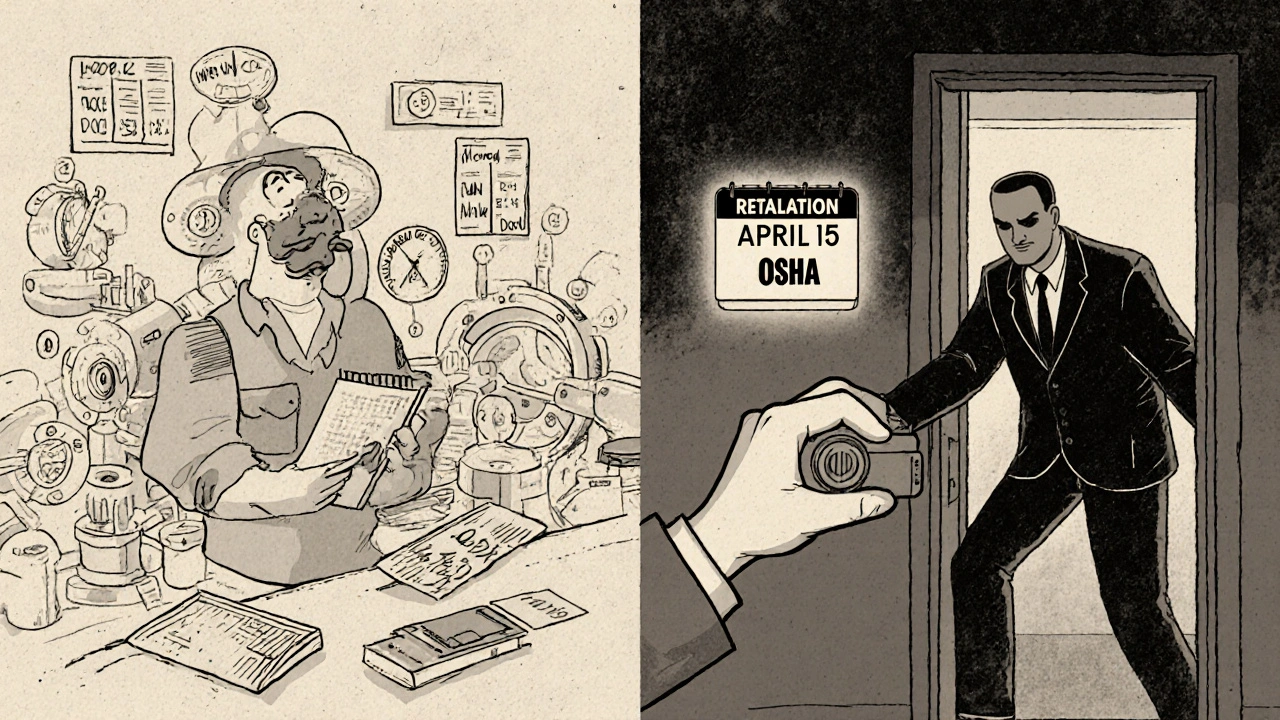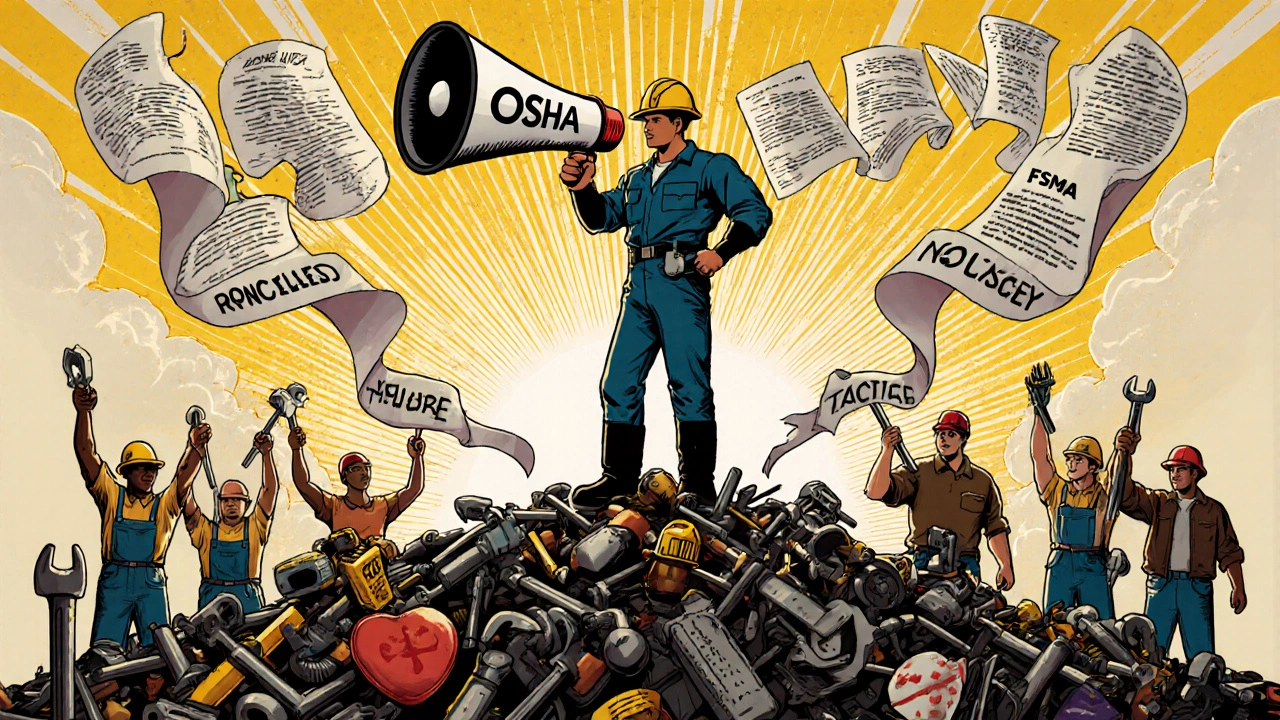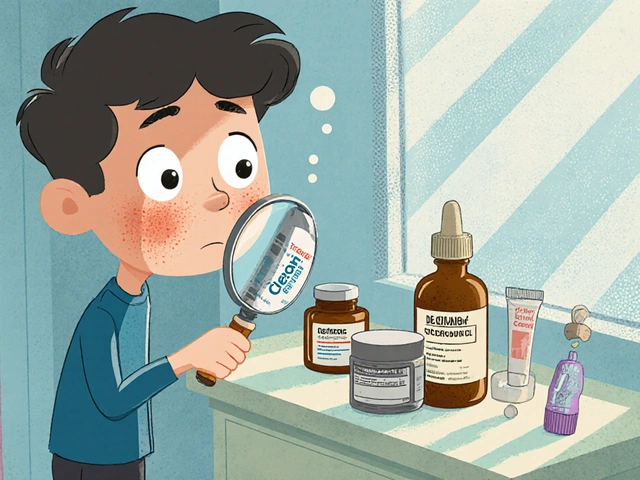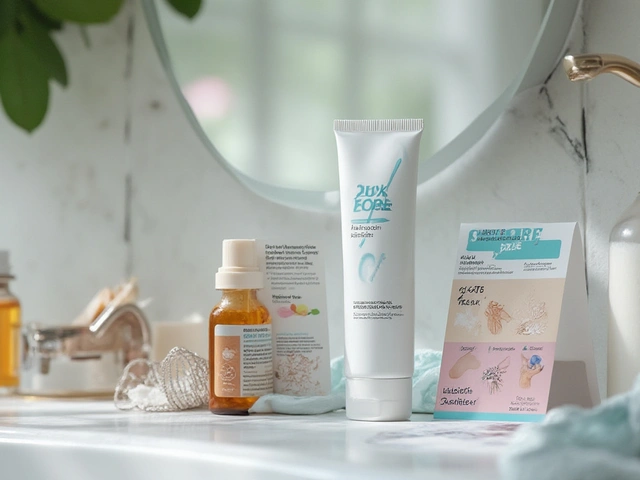What Happens When You Report a Safety Problem in Manufacturing?
You spot a flaw in a batch of car brakes. The screws are loose. The machine that checks them hasn’t been calibrated in six months. You tell your supervisor. Two weeks later, you’re moved to the night shift. No warning. No reason. You’re not the only one who’s noticed. But no one else says anything. Why? Because they’re scared.
That fear isn’t irrational. In 2022, 68% of manufacturing workers who reported quality or safety issues still faced some kind of retaliation - even though federal law says they’re protected. The problem isn’t that the laws don’t exist. It’s that most people don’t know how they work, when to act, or what counts as a protected report.
Whistleblower protections for manufacturing quality issues aren’t just legal fine print. They’re the only thing standing between a defective product and a child choking on lead paint, a car crash from faulty airbags, or a hospital infection from unsanitary medical devices. These laws exist to make sure someone can speak up - without losing their job, their income, or their future.
Which Laws Actually Protect You?
There’s no single law that covers every factory. Instead, there are over 20 federal laws, each tied to a specific industry. If you work in food production, your protection comes from the FDA’s Food Safety Modernization Act (FSMA). If you make toys or electronics, it’s the Consumer Product Safety Improvement Act (CPSIA). If you’re in auto manufacturing or parts supply, the MAP-21 law applies.
Here’s what each one covers:
- CPSIA (2008): Protects workers who report unsafe products - like toys with lead paint, baby strollers that collapse, or clothing that catches fire. In 2022, 58% of CPSIA complaints were about lead in children’s products.
- FSMA (2011): Covers food and drug manufacturers. If you see mold in a production line, dirty equipment, or falsified test results, you’re protected. 63% of FSMA complaints in 2022 involved unsanitary conditions.
- MAP-21 (2012): For automotive manufacturers and suppliers. This law was behind 41% of all vehicle recalls in 2022. That means nearly half of all safety recalls started because someone inside the company spoke up.
- Sarbanes-Oxley (SOX): If you work for a company that trades on the stock market - even if you’re not in finance - you’re covered. A 2014 Supreme Court ruling expanded this to include contractors and subcontractors. That means if you work for a parts supplier to Tesla or Ford, you’re likely protected under SOX too.
These laws don’t just protect you if you call the government. They also cover internal reports - telling your manager, HR, or safety officer. In fact, 62% of CPSIA cases were filed after someone reported the issue internally first.
What Counts as Retaliation?
Retaliation doesn’t always mean getting fired. Sometimes it’s quieter. More dangerous.
Here’s what’s illegal:
- Getting fired, suspended, or demoted
- Being moved to a worse shift or location
- Having your pay cut or hours reduced
- Being denied promotions or training
- Being isolated, threatened, or harassed
- Being forced to quit (called "constructive discharge")
- Being blacklisted from future jobs in the industry
One worker in a medical device plant reported that a machine was producing faulty insulin pumps. She was told to "stop making trouble." A month later, her team was shut down. Her job was "restructured" out of existence. She didn’t get a severance. She couldn’t find another job in the industry for 18 months.
That’s retaliation. And it’s against the law.

How to Report - And Not Get Screwed
Reporting a quality issue isn’t just about courage. It’s about strategy.
Here’s what works:
- Document everything. Write down dates, times, product numbers, batch codes, and what you saw. Take photos if you can. Save emails. Don’t rely on memory. You’ll need this later.
- Use internal channels first. Most laws protect you even if you report to your boss or safety officer. This gives the company a chance to fix it - and gives you a paper trail. But don’t wait too long. If nothing happens, move to the next step.
- Know your deadline. This is where most people fail. You have 30 days to file for transportation-related issues (like cars or parts). For food and consumer products, you have 180 days. Miss the deadline? Your case is thrown out. 41% of whistleblower complaints were dismissed for this reason in 2021.
- File with OSHA. Go to osha.gov/whistleblower or call 1-800-321-OSHA. You don’t need a lawyer to file. OSHA will investigate. They can’t force your employer to fix the problem, but they can order you to be reinstated, paid back wages, and given compensation.
- Don’t use social media. A 2022 NLRB case ruled that posting about quality issues on Facebook or LinkedIn doesn’t count as protected speech - unless you connect it to workplace safety or collective action. If you want protection, file formally, not publicly.
Medical device and automotive whistleblowers often need 8 to 14 weeks to gather enough evidence. Be patient. Be thorough. Your case depends on specifics - not just "something’s wrong."
What Happens After You File?
Once you file, OSHA has 60 to 90 days to look into your complaint. They’ll interview you, your employer, and possibly coworkers. They might inspect the facility. Then they’ll decide: Was there retaliation? Was the report protected?
If they find in your favor, they can order:
- Reinstatement to your job
- Back pay with interest
- Compensatory damages for emotional stress
- Attorney’s fees
The average payout for a successful case in 2022 was $287,500. But here’s the catch: 47% of whistleblowers didn’t know OSHA offers free legal help until after they filed. You don’t have to pay for a lawyer. OSHA will connect you to one.
If your case is dismissed, you can ask for a full hearing before a Department of Labor judge. That’s your next step. Don’t give up.
Why So Many Cases Fail - And How to Avoid It
Not every report leads to justice. Here’s why most fail:
- Missing deadlines. As mentioned, 41% are thrown out for being late.
- Not proving it was a protected disclosure. You can’t just say "the product is bad." You have to show it violates a specific law - like CPSIA’s lead limits or FSMA’s sanitation rules.
- Too vague. A 2022 Supreme Court ruling said you need to prove your report was "definitive and detailed." Saying "I think this machine is dangerous" isn’t enough. Saying "The torque setting on Machine 7 was changed from 15 Nm to 8 Nm on March 12, violating ISO 9001 Section 8.5.1 and creating a risk of brake failure" - that’s enough.
- Confidentiality agreements. Some companies make you sign NDAs. But a 2023 Department of Energy rule says those can’t block you from reporting safety issues. If you’re working on government contracts, your NDA doesn’t override federal whistleblower law.
And here’s the biggest trap: thinking your company will fix it if you just give them a chance. In 2022, 32% of whistleblowers were forced out through "constructive discharge" - meaning their work environment became so hostile they had no choice but to quit. Don’t wait for the company to do the right thing. Protect yourself first.

What Companies Should Be Doing - But Usually Don’t
The Society of Manufacturing Engineers found that 79% of manufacturing professionals believe companies should have formal whistleblower protocols. But only 34% do.
Companies that do it right have:
- A confidential hotline or online portal
- Training for managers on how to handle reports
- Clear timelines for investigating issues
- Protection from retaliation written into their employee handbook
- A whistleblower ombudsman - like the one the CPSC created in 2022
These aren’t just nice-to-haves. They prevent recalls, lawsuits, and deaths. And they save money. Every $1 spent on whistleblower programs saves $4 in avoided recalls and fines, according to the CPSC.
If your company doesn’t have this - speak up anyway. But document. File. Protect yourself.
Frequently Asked Questions
Can I report anonymously?
Yes, you can file a whistleblower complaint anonymously with OSHA. But if you do, OSHA can’t contact you to ask for more details, which might hurt your case. It’s better to give your name and ask them to keep your identity confidential during the investigation. OSHA is required to protect your identity from your employer.
What if I’m a contractor or temp worker?
You’re still protected. Laws like CPSIA, FSMA, and SOX cover contractors, temps, and subcontractors. Even if you’re hired through a staffing agency, you have the same rights as full-time employees. The 2014 Supreme Court case Lawson v. FMR LLC confirmed this for workers in public company supply chains.
Can I be fired for reporting something that turns out to be wrong?
No - as long as you had a reasonable belief that the issue was a violation. You don’t have to be 100% right. You just need to have a good-faith reason to think something was illegal or unsafe. The law protects honest mistakes, not malicious lies.
How long do I have to file a complaint?
It depends on the law. For CPSIA and FSMA: 180 days. For MAP-21 (vehicles): 30 days. For environmental violations: 45 days. For SOX: 180 days. If you’re unsure, file within 30 days. OSHA will tell you if your case falls under a different deadline.
Can my employer find out I reported them?
OSHA is legally required to keep your identity confidential during the investigation. Your employer won’t be told who filed - unless you choose to reveal yourself during a hearing. If your employer finds out and retaliates anyway, that’s a separate violation - and you can file another complaint.
What to Do Next
If you’ve seen a quality issue in manufacturing - don’t wait. Don’t hope someone else will fix it. Document what you saw. Write down dates, codes, and names. Talk to a trusted coworker if you can. Then call OSHA at 1-800-321-OSHA. Do it within 10 days of any retaliation. Even if you’re not sure you have a case, they’ll help you figure it out.
You’re not a traitor. You’re not a snitch. You’re the reason someone’s child doesn’t choke on a broken toy. You’re the reason a car doesn’t crash. You’re the reason a patient gets safe medicine.
The system isn’t perfect. But it’s there. And it works - if you use it right.






